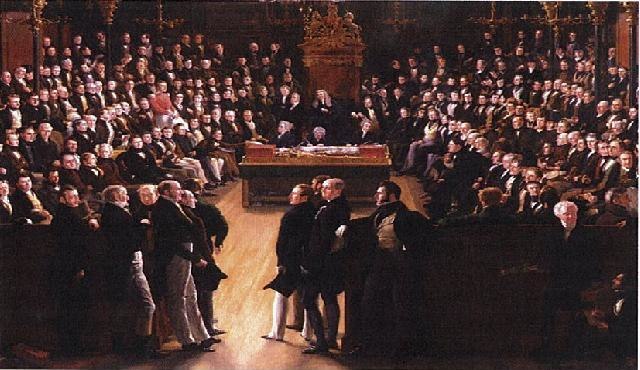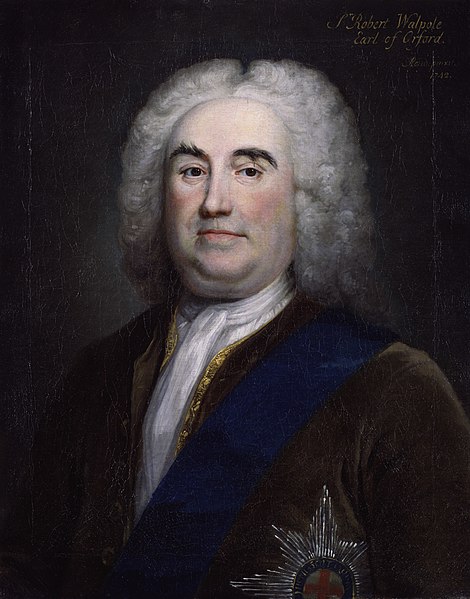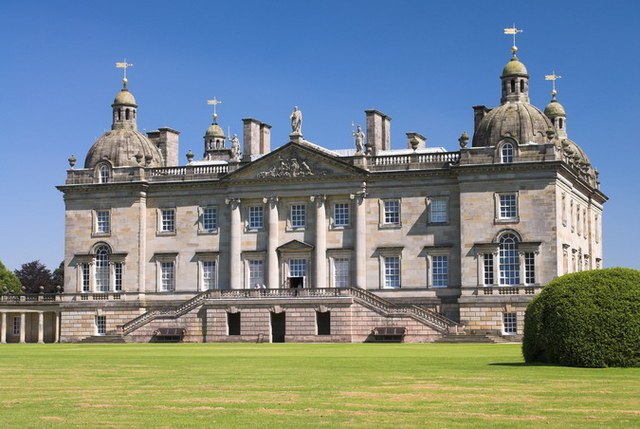United Kingdom of Great Britain and Ireland
The United Kingdom of Great Britain and Ireland was a sovereign state in Northwestern Europe that was established by the union in 1801 of the Kingdom of Great Britain and the Kingdom of Ireland. The establishment of the Irish Free State in 1922 led to the remainder later being renamed the United Kingdom of Great Britain and Northern Ireland in 1927.
The signing of the Treaty of Ghent ending the war with the United States (by Amédée Forestier, c. 1915)
A painting by James Pollard showing Trafalgar Square before the erection of Nelson's Column
Opening of the Liverpool and Manchester Railway in 1830
The House of Commons, 1833 by George Hayter commemorates the passing of the Reform Act of 1832. It depicts the first session of the newly reformed House of Commons on 5 February 1833. In the foreground, the leading statesmen from the Lords: Charles Grey, 2nd Earl Grey (1764–1845), William Lamb, 2nd Viscount Melbourne (1779–1848) and the Whigs on the left; and Arthur Wellesley, 1st Duke of Wellington (1769–1852) and the Tories on the right.
The Kingdom of Great Britain was a sovereign state in Western Europe from 1707 to the end of 1800. The state was created by the 1706 Treaty of Union and ratified by the Acts of Union 1707, which united the kingdoms of England and Scotland to form a single kingdom encompassing the whole island of Great Britain and its outlying islands, with the exception of the Isle of Man and the Channel Islands. The unitary state was governed by a single parliament at the Palace of Westminster, but distinct legal systems—English law and Scots law—remained in use.
Queen Anne, who reigned from 1702 to 1714
Walpole, by Arthur Pond
Walpole's Houghton Hall
1740 political cartoon depicting a towering Walpole as the Colossus of Rhodes








